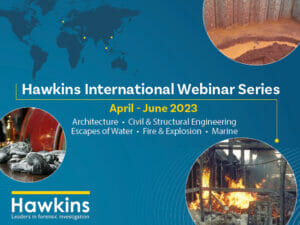Acoustic Shock: Sudden and Traumatic Hearing Loss
In 2018 and 2019, those involved in personal injury from noise and vibration exposure were captivated by a case involving a violinist who successfully took his employer to Court for damage to his hearing (Goldscheider v The Royal Opera House 2018 EWHC 687). The musician, who it is reported was awarded £750,000 in damages, sustained the injury after attending rehearsals for an upcoming performance, in which the orchestra was seated within a small space. He was subjected to very loud, albeit irregular, bursts of sound from the trumpet section. After three days of rehearsals, he sustained an injury that significantly impacted his hearing, his ability to tolerate music and his career.
This case is particularly interesting in how it differs from most claims for noise inducted hearing loss (NIHL). Exposure to high levels of noise can cause hearing loss, but typically, the injury is sustained over the course of several years. Of course, there are incidents of sudden traumatic damage to the ear following exposure to very loud noise, such as rupturing of the ear drum following an explosion. However, the field of acoustics and noise has also, in the last 20 years or so, become aware of a different type of injury – one in which the injured party need only be exposed to noise on one occasion and for which the mechanism of injury is unclear to medical experts (in fact, some deny its existence). It is termed ‘acoustic shock’.
Acoustic shock (AS) generally arises following a loud and, normally, unexpected sound. AS introduces several problems for those involved in the investigation of noise-related injuries. In a typical NIHL claim, both medical and engineering evidence is relied upon to determine the likelihood that a Claimant has suffered the injury due to noise exposure. The ‘Guidelines on the diagnosis of noise-induced hearing loss for medicolegal purposes’ by Coles, Lutman and Buffin (2000), typically referred to as the ‘Coles’ or ‘CLB’ guidelines, sets out both the hearing loss severity and profile, as well as lifetime exposure to noise, that can indicate, on the balance of probabilities, whether a NIHL is likely. However, no such guidelines currently exist for AS. Of particular note is that AS can potentially arise from noise exposure that seemingly falls well below the daily exposure limits set out in the Regulations. In fact, such an injury can arise even if hearing protection is worn.

It is normally the role of the expert acoustic engineer to determine the noise levels to which a Claimant was exposed and to compare these to the Regulatory limits. In cases where the offending noise can be repeated or approximated, the engineer is required to call on an arsenal of measuring techniques and devices to determine noise exposure levels. For example, miniature microphones allow in-ear measurement when hearing protection or headsets are worn.
A difficultly which could arise in establishing in-ear noise levels is that exposing a subject to the potentially injurious noise in order to replicate the claim conditions could amount to a significant risk to health and safety. For this reason, in a recent investigation involving a telephone user who was allegedly subjected to the noise from an alarm emitted through his telephone handset, his exposure could safely be approximated by repeating the event using an artificial ear.
As more cases of acoustic shock arise, the expert acoustic engineer will need to implement a detailed investigative approach to establishing noise exposure, which goes above and beyond the use of a standalone hand-held sound level meter or dosimeter (a device that is typically worn on the shoulder that measures noise levels throughout an activity or working day). The outcome of such detailed investigations will, it is hoped, play a role in establishing new and clear guidance for determining the likelihood of this type of injury arising as a result of exposure to noise.
ABOUT THE AUTHOR
Ros Lambert-Porter has a background as an acoustics engineering consultant. She provides expert advice in relation to acoustics in buildings, environmental impact, noise related disputes and personal injuries due to noise and vibration exposure.





